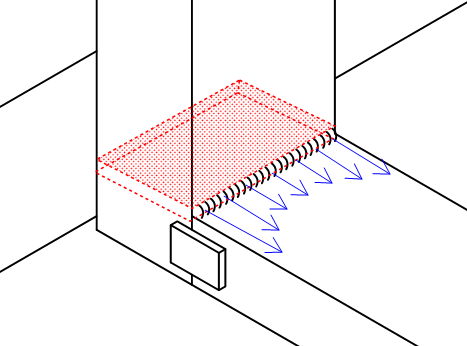310toumad
Mechanical
- May 12, 2016
- 63
Lets say you have the set up in the diagram, with a HSS rectangular tube welded against another tube at a 90 degree angle. The connections to that vertical tube are irrelevant because I'm only concerned about this one joint. There is a cantilevered load on the end, and assume those two straps connect the tubes and are also welded all the way around. Now, if you ignore the straps it seems relatively straightforward in computing the max. stress of the weld joining the tubes. You simply look up the Iu for that particular weld group (whether its welded all the way around, 3 sides, etc.) then compute I = .707*h*Iu. Then Mc/I for bending stress and V/A for shear stress and use the Pythagorean theorem to find the max stress.
My question is, if you added those two straps on the sides to reinforce this joint, how would you go about calculating the contribution of those weld groups? How would you find the maximum stress? Can you just calculate the "I" value for the welds around the straps and add it to the value discussed above? I guess its throwing me off because for all the examples I find, they only examine one, continuous weld grouping, nothing like this. Thanks for any input.
My question is, if you added those two straps on the sides to reinforce this joint, how would you go about calculating the contribution of those weld groups? How would you find the maximum stress? Can you just calculate the "I" value for the welds around the straps and add it to the value discussed above? I guess its throwing me off because for all the examples I find, they only examine one, continuous weld grouping, nothing like this. Thanks for any input.

